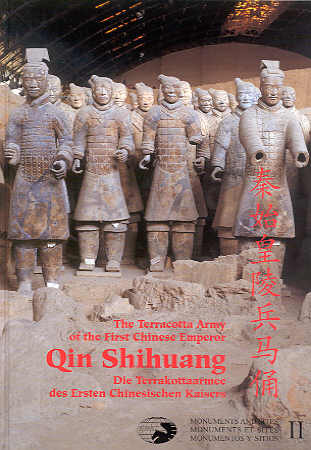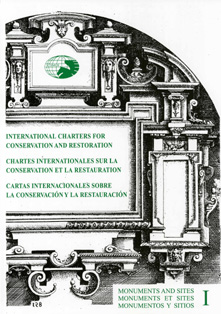A joint publication with TICCIH, 1996
Full Text in one PDF File
Preface
This list has been prepared under the auspices of TICCIH (The International Committee for the Conservation of the Industrial Heritage) as one of a series of industry-by-industry lists for use by ICOMOS (the International Council on Monuments and Sites) in providing the World Heritage Committee with a list of "waterways" sites recommended as being of international significance. This is not a sum of proposals from each individual country, nor does it make any formal proposals for inscription on the World Heritage List. It merely attempts to assist the Committee by trying to arrive at a consensus of "expert" opinion on what significant sites, monuments, landscapes, and transport lines and corridors exist. This is part of the Global Strategy designed to identify monuments and sites in categories that are under-represented on the World Heritage List.
This list is mainly concerned with waterways whose primary aim was navigation and with the monuments that formed each line of waterway.
Introduction
Internationally significant waterways might be considered for World Heritage listing by conforming with one of four monument types:
- Individually significant structures or monuments along the line of a canal or waterway;
- Integrated industrial areas, either manufacturing or extractive, which contain canals as an essential part of the industrial landscape;
- Heritage transportation canal corridors, where significant lengths of individual waterways and their infrastructure are considered of importance as a particular type of cultural landscape.
- Historic canal lines (largely confined to the line of the waterway itself) where the surrounding cultural landscape is not necessarily largely, or wholly, a creation of canal transport.
Definition
The Information Document on Heritage Canals produced for presentation to the World Heritage Committee by the experts meeting under the auspices of Parks Canada Heritage in 1994 (hereafter referred to as the 1994 Heritage Canals Document) defined canals as follows:
A canal is a human-engineered waterway. It may be of outstanding universal value from the point of view of history or technology, either intrinsically or as an exceptional example representative of this category of cultural property. It may be a monumental work, the defining feature of a linear cultural landscape, or an integral component of a complex cultural landscape.
This sectional study by TICCIH will, however, concentrate on canals that were, primarily, or secondarily, used for navigation.
Areas and values of significance in the canal heritage
The 1994 Heritage Canal Document noted that the significance of canals can be examined under technological, economic, social, and landscape factors as follows:
| A |
TECHNOLOGY
Canals can serve a variety of purposes: irrigation, navigation, water-power, flood mitigation, land-drainage, defence, and water-supply. The following are the areas of technology which may be of significance:
- The line and waterproofing of the water channel;
- The engineering structures of the line with reference to comparative structural features in other areas of architecture and technology;
- The development of the sophistication of constructional methods;
- The transfer of technologies.
|
| B |
ECONOMY
Canals contribute to the economy in a variety of ways, eg in terms of economic development and the conveyance of goods and people. Canals were the first effective man-made carriers of heavy bulk cargoes. Canals are of continuing economic and recreational use. The following factors are important:
- Nation building;
- Agricultural development;
- Industrial development;
- Generation of wealth;
- Development of engineering skills applied to other areas and industries.
|
| C |
SOCIAL FACTORS
The building of canals had social consequences:
- The redistribution of wealth, with social and cultural results;
- The movement of people and the interaction of cultural groups.
|
| D |
LANDSCAPES
Such large-scale engineering works had an impact on the natural landscape. There was also the generation of new industrial settlement patterns from rural dispersed populations to the creation of urban nucleii.
NOTE: There are potentially some additional areas of significance associated with classifications of historic towns and natural criteria.
|
Technology transfer or indigenous development
The idea of a structure having an international, or indeed universal, influence is obviously central to it being viewed as of relevance to the heritage of a large part of mankind. However, before the end of the 18th century such a process of diffusion of knowledge is difficult to document. A particularly difficult problem is to assess how far early Chinese technology influenced the foundation of European canal building in Italy and the Netherlands, or how far these are processes of indigenous development for each continent.
There is some evidence for the international nature of the Dutch contribution. Among the examples of Dutch influence are the New Holland area of St Petersburg (Russia) and the canals in Nymburk (Czech Republic). Both are examples of canals used for fortification. There is also a Preussische-Holland canal in Poland, close to Elbing, which was built in 1297. There are several "Dutch" villages in the area. Dutch colonial government in Asia also developed inland waterways in Sri Lanka and Indonesia. In the early 19th century, the Dutchman, Wollant, was the Director-General of Transport in Russia, building many of the early canals there.1
Thomas Steers, the British engineer, learnt about water technology when he was a soldier fighting for William of Orange in the Netherlands. He was particularly important to the early import of hydraulic-engineering techniques to Britain in the early years of the world's first Industrial Revolution. He was the builder of Liverpool's first dock, the Mersey and Irwell, the Douglas and possibly the Weaver Navigations, and the Newry Canal in Northern Ireland. The last-named was the first summit level canal in the United Kingdom and the first canal in Ireland or Britain to use ground (French pattern) paddles. Steers showed to a British and Irish public that it was possible and economic to build inland waterways.
From Italy Leonardo da Vinci spread the idea of ambitious waterways to France. The Duke of Bridgewater observed the heavy engineering of the Canal du Midi and was able to use its example to supply cheap coal to Manchester and so to help to foster the Industrial Revolution. This in turn drew "industrial spies" from the continent of Europe and from North America in a process which is well documented and published.
In Russia the British sea captain, Perry, was brought over by Peter the Great between 1700 and 1712 to survey and make rivers navigable.2
The transfer of this new technology to the United States of America was particularly important to the success and speed of the early economic growth of what has become the world's most powerful and influential nation. The notion of cheap and replaceable structures in the rush to attain economic development is epitomized by the timber locks and aqueducts of the early American canals. The details of this particular intercontinental technology transfer are given in detail here both because of their importance and as an example of a known part of this process.
Work actually started on the first sizable (ie more than a navigable short-cut around rapids) American canal during the years of the British "canal mania" in the 1790s. In 1786 the South Carolina legislature enacted a law to connect the Santee and Cooper rivers above Charleston and work was entrusted to Colonel John Christian Senf. Senf was a Swede serving with the British forces when he was captured at Saratoga. He then served as an engineer with the South Carolina militia and became Chief Engineer for the State of South Carolina. He directed and did much of the detailed supervisory work on the project. It was 35km long and 10.7m wide with a 1.2m depth of water carrying boats of 22.4 tonnes burden, ie standard British narrow-boat size.3
In 1792, Pennsylvanians had written to a contact in Britain, asking him to find a civil-engineer who could take charge of canal- and road-building. He approached the leading civil-engineer in Britain, William Jessop, who recommended William Weston.4 Weston had been employed on the Oxford Canal and had also built a large three-span turnpike bridge over the wide river Trent at Gainsborough in c 1786. He was probably a son or a nephew of Samuel Weston, an engineer who had worked on the Chester and Oxford Canals in Britain and who had surveyed for the Kennet and Avon and proposed Hampton Gay Canal. William arrived in Philadelphia with his bride, in January 1793 and immediately went to work designing locks for the Schuylkill & Susquehanna Canal. He brought with him a sophisticated optical surveying level: the Troughton "Wye Level" which had been unknown in the USA, but was soon in use on almost every canal project there.
In the same way Weston was the catalyst in starting a new generation of American engineers in developing their canal surveying and engineering skills. Loami Baldwin sought him out as the only experienced canal engineer in New England and persuaded him to spend a few weeks at Boston, running surveys for the second sizeable American canal, the 44.28km Middlesex Canal from Boston to Lowell (1794-1803). It had 20 locks, seven aqueducts, and 50 bridges; it became a field-study project for many of the engineers on the Erie Canal and facilitated the development of the great textile centre at Lowell. Loami Baldwin II followed his father's profession and became Chief Engineer of the Union Canal, connecting Middletown and Reading, Pennsylvania. Construction of the Schuylkill and Susquehanna Navigation ground to a halt and among other tasks he was called to assist in solving some of the problems besetting the builders of the Potomack Canal at Great Falls by the Company President, George Washington; Washington himself was involved in several canal schemes.
In 1792 two river navigation companies were incorporated in New York State, encouraged by Elkanah Watson and General Philip Schuyler of Albany. Watson had seen Dutch canals at first hand. The northern scheme did not then get past the surveys prepared for it by the young French engineer Marc Isambard Brunel. In 1794-95 Weston was employed on the western scheme to undertake surveys for various improvements on the Mohawk River in the Fort Stanwix area. He employed the young Benjamin Wright to assist him. In 1797-99 Weston then seems to have taken charge of the actual engineering works for two years, with Benjamin Wright again serving under him. On the Mohawk River two bypass canals and sets of locks were built, and a third to link the Mohawk to Wood Creek. By 1798 16- ton Durham boats could use the Mohawk River but could not reach either Lake Ontario or Albany: that had to await the resources available for building the later Erie Canal. After this and other varied work Weston returned to England in about 1800.5
In 1811 Weston was asked to review plans (by mail) for the Erie Canal, and in 1813 was offered the job of Chief Engineer of the Erie Canal at a high salary. The USA had been at war with Great Britain in 1812 and Weston refused. His former assistant, Benjamin Wright, was chosen instead. Work on canals in the USA had virtually ceased in the first fifteen years of the 19th century. Wright was joined by James Geddes on the Champlain Canal connection and the young Canvass White, who turned out to be the real engineering genius of the Erie Canal. In 1817 Canvass White was sent to Europe to inspect canal construction there and to obtain some up-to-date surveying equipment. White walked 3220km along the canals of Great Britain, studying all the features. He returned the following year with copious notes and drawings and new surveying instruments. On his return he quickly found a native deposit of hydraulic limestone. In 1825 the completion of the Erie Canal revolutionized transport between the eastern and western states of the union. Its success induced the 'canal fever' of the 1820s during which in Pennsylvania alone some 2254km of canal were in progress or planning by 1830.
The engineers trained on the Erie Canal or in New York were in demand everywhere and developed much of this new infrastructure: Nathan S Roberts (Pennsylvania Main Line), William Milnor Roberts (Lehigh Canal, Union Canal, Allegheny Portage Railroad, Monongahela Navigation), Canvass White (Union Canal, Delaware and Hudson Canal, Lehigh Canal), Samuel Honeyman Kneass (Susquehanna Division, Delaware Division, Delaware and Schuylkill Canal, and Wiconisco Canal), Horatio Allen (Delaware and Hudson Canal), John Bloomfield Jervis (Delaware and Hudson Canal), and Charles Ellet (Schuylkill Navigation).
Benjamin Wright, the "Father of American Civil Engineering" (1968 declaration: the American Society of Civil Engineers) and Chief Engineer of the Erie Canal, went on to be highly influential in canal and later railroad construction in the USA. He was a consultant on the Connecticut River Navigation (from Tidewater to Northampton, Massachusetts), a consultant on the Delaware and Hudson Canal, a consultant, and later Chief Engineer, on the James River and Kanawha Canal, a consultant on the Blackwater Canal in Rhode Island and Massachusetts, Chief Engineer on the Chesapeake and Ohio Canal, Chief Engineer on the Delaware & Hudson Canal, Chief Engineer on the St Lawrence Ship Canal, Chief Engineer on the Welland Canal, and a consultant on the Illinois-Michigan Canal.
The associated Champlain Canal was opened in 1823. The American engineer James Geddes had been assisted by Marc Isambard Brunel, who had carried out the original survey work between the Hudson River and Lake Champlain. This documentation seems to clearly show how European canal technology was directly transplanted to the United States of America.
Three other particularly well documented examples of international and intercontinental technology transfer are presented by the spread of boat lifts and large ship canals (see relevant sections).
The evaluation system used for this study
The first time a new technology is applied to civil engineering or architecture is of particular significance to the history of mankind, depending on how wide and useful that particular innovation is. Transport canals have historically been very important as the first economic means of transporting heavy and bulky goods, allowing the evolution of developed societies with a high degree of economic and commercial interchange. The application of existing, or new, technologies to the evolution in sophistication of the waterways infrastructure is particularly significant in that process. Equally important is the process of technology transfer between countries and continents, particularly in ways that this has significantly progressed the economic well-being of mankind and facilitated the development of sophisticated societies. Such arguments can be applied equally to individual canal structures, to whole waterways, to waterways with associated corridors of economic development, or to integrated industrial areas such as mining fields that are covered by successive integrated transport systems.
However, the present conditions of sites, structures, and waterways are obvious weighting factors in assessing the significance of such types of structures. It may well be that the present condition of the most significant sites as built do not warrant their designation as sites of world importance where sites elsewhere represent an important stage in the evolution of world canals to a greater extent.
Like many other types of industrial archaeological feature, canals and waterways are important because of their functional use. However, this functional use itself will mean that parts of a mechanism or infrastructure have to be maintained, modified, or renewed in order to maintain the primary function of the structure or route. That this concept of renewal will not result in an automatic rejection of a site as being of world importance has already been accepted by ICOMOS at its November 1994 meeting on authenticity in Nara (Japan). It was also recognized in the 1994 Canal Heritage Document that an element of the heritage of a canal is its evolution over the course of time.
Grading
This is being done by the number of asterisks (*) noted under each site entered under the following numbered categories. Each site is awarded one * for a suggested site of some international importance; two ** for a site suggested to be of great international importance; and three *** for a site suggested to be of outstanding international importance in relation to the following criteria (slightly adapted from criteria i-iv in para 24 of the Operational Guidelines for the Implementation of the World Heritage Convention, WHC/2/Revised January 1996: UNESCO):
- To be a masterpiece of human creative genius;
- To have exerted great influence on developments of technological importance;
- To be an outstanding example of structure or feature which illustrates a significant stages in human history;
- Directly associated with economic or social developments of outstanding universal significance.
For the purposes of this study authenticity is not accepted as being of outstanding significance in a type of functional structure or feature whose prime purpose was to meet an economic purpose facilitated by constant maintenance and partial renewal. The International Experts Meeting held in Canada in September 1994 concluded that the technological changes the canal has undergone may in themselves constitute an element in the heritage of the waterway.
The level of existing legal protection and management mechanisms is not considered of great importance in this advisory study since States Parties can introduce such mechanisms prior to any formal intended application for World Heritage status.
Units of measurement
In the final list most measurements will be in metric units, with some significant imperial measurements and distances given in parentheses.
| 1 foot (1ft) = 0.305 metres |
1 mile = 1.61 kilometres |
| 1 metre (1m) = 3.28 feet |
1 kilometre (1km) = 0.62 miles. |
General introduction to waterways history
The civil engineering need to construct an artificial navigable channel grew in sophistication in known stages throughout the history of civilization. The requirements for an inland navigation were rather different from those needed for channels accommodating sea-going craft and the former will be considered first. Simple river navigations would attempt to 'improve' the natural channel of rivers. The first recorded instance of this being done was in Egypt in c 2300-2180 BC. The Pharaoh Pepi I was sending expeditions up the Nile beyond the First Cataract near Aswan and therefore (as recorded by Uni, then governor of Upper Egypt on an inscription) "His Majesty sent me to dig five canals in the South and to make three cargo boats and four tow-boats of acacia wood. Then the dark-skinned chieftains ... drew timber for them, and I did the whole in a single year."6
Gradually the artificial channels built bypassing bends and natural obstacles on inland rivers became longer, until they formed completely separate parallel courses or "lateral canals." The traversing of gradients involved the development of locks, inclined planes, and lifts to facilitate changes in level.
The first known canal to cross a marked watershed between river basins was the Ling Chu or "Magic Transport Canal," constructed in China in 219 BC (see "Contour canals"). The first river-to-sea canal is earlier: it is reputed to have been built by the Pharaoh Sesosteris I some 4000 years ago in Egypt.7
Canals needed to be able to rise out of one river valley and into the next (the Ling Chu left one river on the level and did not rise to a "summit level") in order to create networks able to facilitate the bulk carriage of cargoes across considerable distances. The Grand Canal in China was the first to do this. The secondary development of these waterways in Europe was particularly significant to the origin of the Industrial Revolution.
Deriving from Italy in the 15th and 16th centuries, sophisticated modern canal engineering was evolved in France in the 16th century, culminating in the Canal du Midi, arguably the world's greatest civil-engineering project since the constructions of the Roman period. This in turn inspired the Duke of Bridgewater to construct the first heavily engineered canal of the Industrial Revolution in Great Britain.
The explosion in waterway construction that followed in Britain resulted in the construction of some 1331 km of navigation that gave England the first integrated national system for the bulk transport of goods and materials in a modern industrialized economy. A second frenetic outburst of activity in Britain in 1789-98 (stimulated by the Industrial Revolution) produced a further 1931km of artificial waterway and was termed the "Canal Mania." The scale of civil engineering applied to canal construction grew ever more intense. Britain had built some 58km of canal tunnel - far more than existed in the rest of the world at that time. Large iron and masonry aqueducts also form part of the heritage of that first blooming of heroic-scale structures, including the great Pontcysyllte Aqueduct, at a height of 38.4m above the river Dee, still the loftiest navigable canal aqueduct ever built.8
In the mid-19th century the leadership in canal engineering passed to North America. There was some intercontinental technology transfer, one notable example being built by British military engineers in Canada, the Rideau Canal. As well as adapting to canal construction in an almost virgin wilderness, this was one of the first canals built for the new technology of the steam-powered boat, which could carry passengers and goods with greater speed, regularity, and comfort than any sailing or towed vessel and which could enormously increase barge tonnages. Another example of such technology transfer was the Erie Canal in the USA, which arguably contributed substantially to the economic growth of what was then an undeveloped country and its transformation into the most powerful country in the world.
Later, towards the end of the 19th century, great strides in developing the sophistication of canal engineering on a larger scale were made successively in France and then in Germany. The evolution of waterways linking oceans and carrying sea-going craft is rather different and is dealt with separately in the "Ship canals" section.

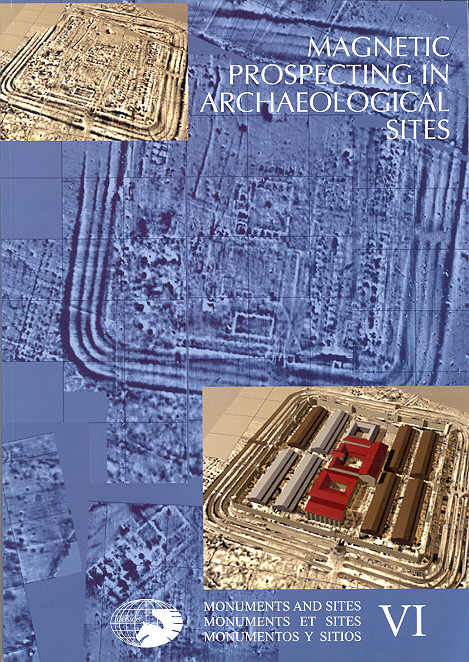
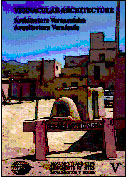 2001
2001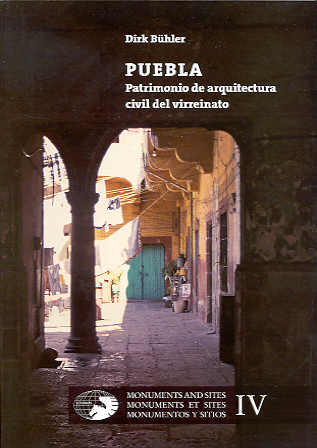
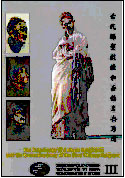 Eng. - Chi.
Eng. - Chi.